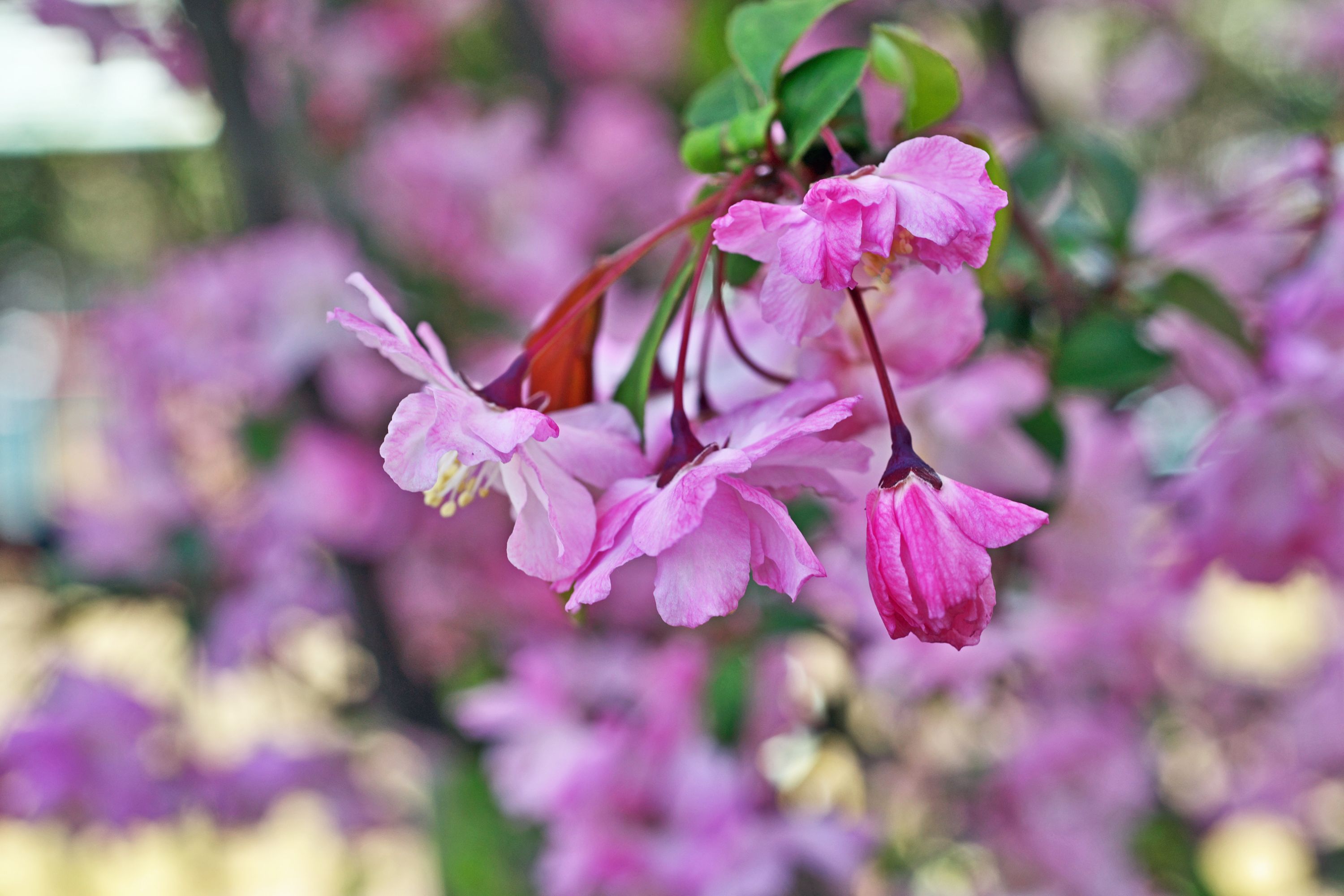Hall crabapple
(Malus halliana)

Description
Malus halliana, commonly known as the Hall's Crabapple, is a captivating deciduous tree that belongs to the Rosaceae family. This exquisite species is native to China and has gained popularity worldwide for its ornamental value, delicate flowers, and attractive fruit. Renowned for its graceful appearance and adaptability, Malus halliana has become a cherished addition to gardens, parks, and landscapes across the globe. In this article, we delve into the various aspects of this remarkable plant, including its botanical features, cultivation requirements, and ecological significance. Taxonomy and Botanical Features Malus halliana was first described by the renowned British horticulturist and botanist, Alfred Rehder, in 1914. The genus name "Malus" is derived from the Latin word for "apple," while the species name "halliana" honors Sir John Hall, an influential figure in Chinese horticulture during the early 20th century. The Hall's Crabapple is a small to medium-sized tree, typically reaching heights of 15 to 20 feet (4.5 to 6 meters) and spreading to a similar width. It boasts an elegant, rounded crown with gracefully arching branches. The tree's bark is smooth and grayish-brown, providing a lovely contrast to its abundant flowers and fruit. The leaves of Malus halliana are alternate, simple, and ovate in shape, measuring around 1.5 to 3 inches (4 to 8 centimeters) in length. They showcase a rich, glossy green color during the growing season, transforming into vibrant shades of yellow and bronze in the autumn, adding further visual appeal. Flowers and Fruits One of the most enchanting features of Malus halliana is its profusion of delicate, fragrant flowers. These blossoms emerge in late spring or early summer, creating a breathtaking display. The flowers are usually pink or white, with five petals and a cluster of prominent yellow stamens at their center. The individual flowers are relatively small, measuring approximately 1 inch (2.5 centimeters) in diameter, but their collective effect is truly mesmerizing. Following the floral spectacle, the Hall's Crabapple produces an abundance of small, rounded fruits. These fruits, known as crabapples, are typically around 0.5 to 1 inch (1.3 to 2.5 centimeters) in diameter and display various shades of green or yellow. While they are not usually consumed directly by humans due to their tart taste, they are a valuable food source for numerous bird species and wildlife. Cultivation and Care Malus halliana is admired not only for its visual allure but also for its ease of cultivation. It thrives in temperate climates and is adaptable to various soil types, including loam, clay, and sandy soils. However, it prefers well-drained soil that retains some moisture. When selecting a planting location, it is important to consider the tree's need for full sun or partial shade. The Hall's Crabapple is relatively tolerant of urban conditions and can withstand moderate air pollution, making it suitable for gardens and green spaces in urban areas. Young Malus halliana trees require regular watering to establish their root systems. Once established, they are relatively drought-tolerant and only need supplemental watering during extended dry periods. Applying a layer of organic mulch around the base of the tree helps conserve moisture, suppress weeds, and maintain soil temperature. Pruning is essential to maintain the tree's attractive form and control its size. It is best performed during the dormant season, typically in late winter or early spring, before the onset of new growth. Regular pruning involves removing dead, damaged, or diseased branches, as well as any crossing or overcrowded branches. This helps improve air circulation and sunlight penetration, reducing the risk of fungal diseases and promoting overall tree health. Propagation of Malus halliana can be achieved through several methods, including seed germination, grafting, and budding. However, it is worth noting that growing the tree from seeds may result in genetic variation, while grafting and budding ensure the retention of desired characteristics. Ecological Significance Beyond its ornamental value, Malus halliana plays a vital ecological role in its native and introduced habitats. The tree's flowers are an excellent source of nectar for bees and other pollinators, contributing to the pollination of nearby plants. Furthermore, the abundant fruit serves as a valuable food source for birds, small mammals, and even certain insects. The tree's branches and foliage provide shelter and nesting sites for birds, enhancing biodiversity in the surrounding ecosystem. In addition to its ecological benefits, Malus halliana has cultural significance as well. In China, the tree has a long history of cultivation and is often associated with celebrations and festivals. It is also valued for its medicinal properties in traditional Chinese medicine, where various parts of the tree, including the fruit, bark, and flowers, are used for their therapeutic qualities. Varieties and Cultivars Several cultivars and varieties of Malus halliana have been developed over the years, each with its own unique features. Some notable examples include: 'Liset': This cultivar is known for its profusion of double, pink flowers, which create a stunning visual spectacle. 'Parkmanii': This variety is renowned for its abundant white flowers and persistent red fruits that persist well into winter, providing interest during the colder months. 'Golden Hornet': This cultivar stands out for its golden-yellow fruits that persist on the tree throughout the winter, adding a touch of vibrant color to the landscape. 'Prairie Fire': This variety is prized for its striking deep pink flowers, purple-red foliage, and persistent red fruits. Conclusion Malus halliana, the Hall's Crabapple, is a captivating tree that effortlessly enchants all who encounter it. From its graceful form and delicate flowers to its vibrant fruits and ecological significance, this species embodies the beauty and resilience of the plant kingdom. Whether planted in gardens, parks, or urban landscapes, Malus halliana adds a touch of elegance and natural splendor, making it a cherished favorite among plant enthusiasts and nature lovers alike.
Taxonomic tree:







